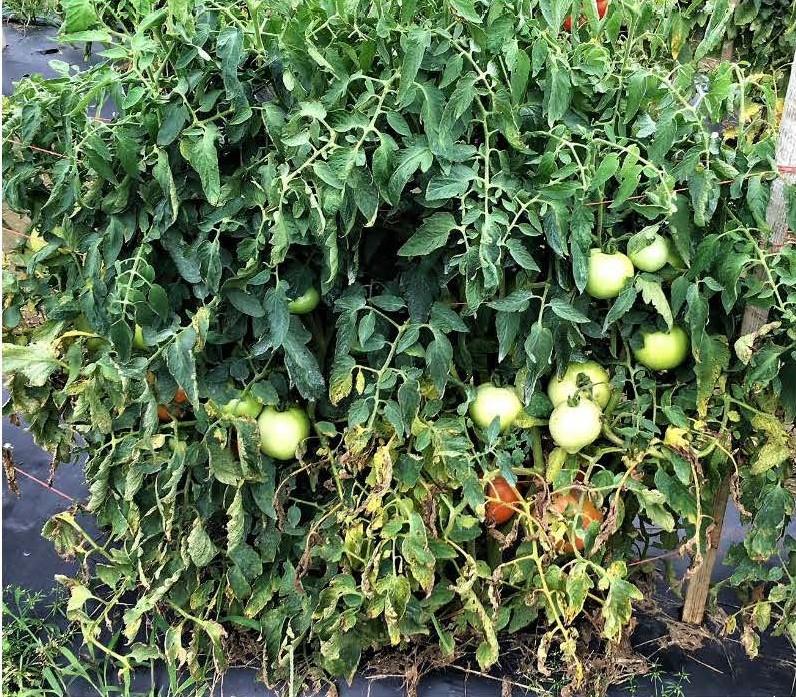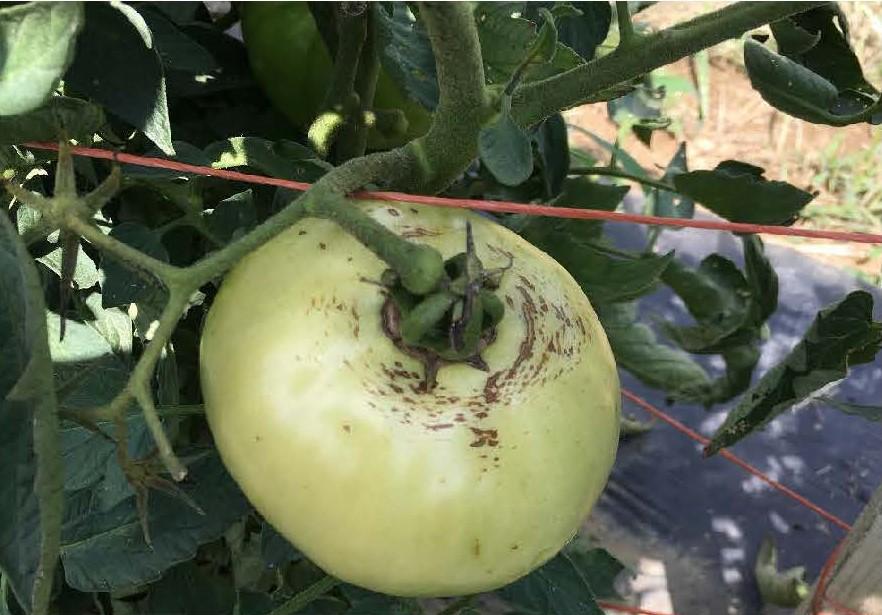Tomato Problems

expose fruit to possible sunscald or rain check.

To no one’s surprise this week has seen a great number of problems pop-up in tomato fields throughout our area. The first of course has been disease with bacterial and fungal diseases spreading. The fungal pathogens usually can be contained with timely (as difficult as that is) fungicide applications. Bacterial spot or speck on the other hand can be much more difficult to control once it gets started and the weather remains wet and warm. In figure 1 on the right hand side is a row of tomatoes that had been sprayed with fungicides and copper for the last several weeks. Bacterial spot has ravaged this row. The row to the left has been sprayed with the same material plus Actigard. Actigard is a plant activator that stimulates systemic acquired resistance, reducing the symptoms of bacterial and even fungal diseases. If you have problems with bacteria spot or speck Actigard can help reduce symptoms (as too can hot water treating your seed before you plant). You must use Actigard before the problem arises in the field, it is not a rescue material. This is the year in which the use of Actigard and heat-treating seeds would have greatly helped reduce losses to bacterial and fungal diseases.
Several fields had similar symptoms as seen in figure 2, where the bottom foliage had been decimated but the top of the plant’s foliage looked good. If fungicide sprays are applied as needed the top foliage should be OK. The problem arises with the green fruit being exposed by the missing foliage. These fruits are in danger of sunburn, sunscald (fig 2) and rain check (the many, tiny concentric cracks that form on the shoulder of fruit and can expand over time (fig. 3). This is where using shade cloth (20-30% shade-inducing) would greatly reduce the chances of sunscald and rain check. Gordon Johnson also had tips on preventing sunburn in vegetables in an earlier WCU article.
